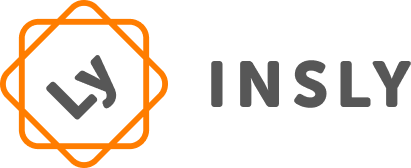The claims handling process is one of insurers’ most important procedures. It’s often the first time that customers get in touch with their insurer directly, so having an efficient system to manage claims is vital. Otherwise, customers can feel let down from slow procedures and a lack of support, damaging your chances of policy renewal.
This article will look at the various stages of the claims handling process and explores how they compare when automated or run manually.
What do typical claims handling processes look like?
Although the customer lifecycle in insurance is longer than what’s described below, for the purposes of this article, we’ll focus solely on the claims handling process. Insurance is a fairly standardised industry, so the claims handling process can be broken down into the following five steps:
1. Claim submission
The first step of the claims handling process is when customers get in touch with their policy provider to submit their first notice of loss (FNOL). Insurers can secure quick wins with customers by providing more contact channels and ensure they can get in touch no matter what.
Unfortunately, this approach can be very labour-intensive, since employees have to process lots of unstructured data from phone lines, email inboxes, webchat portals, social media platforms, and more. Instead, automated tools can standardise all FNOL submissions, ensuring customers can easily submit claims. Tools like Insly can also help insurers save time on data entry, and automatically send relevant information to verification tools such as Anti Money Laundering (AML) and sanctions check databases.
2. Data validation
The next step is validation, where, among other things, the claims data is checked to see whether it falls under the policy’s coverage. Validation checks can fall into several categories including policy validation, cover, event, Anti Money Laundering check and sanction checks. These verification steps are especially important since around 5-10% of all claims are fraudulent. Manual fraud detection checks remain a mainstay in the claims handling process, but automated tools can help claims teams quickly flag information that requires further investigation. Therefore, automated data validation tools can help insurers minimise the risk posed by human error in fraud detection. Insly’s platform, for example, enables claims teams to set search parameters within data sets to verify key pieces of information for consistency.
In contrast, holding and searching through high volumes of paper or siloed data can be hugely inefficient and error-prone. Plus, companies incur additional costs in storing all of this data for a long time period. In contrast, automated insurance platforms give you secure access to your claims files for a fraction of the cost of backing up this data on your own systems. All claims data is held in the cloud and can be easily and validated against numerous records – eliminating information silos in your organisation.
3. Customer contact
Insurers often have to follow up with their customers to ask questions about their claim or update them on its progress. Manual systems can be extremely slow, sometimes taking days, which can cause friction in the customer relationship.
Striking the right balance between manual and automated process is important. Research shows that automation can generate a 10-15% increase in Net Promoter Scores (NPS) since claims processes become faster and more transparent. However, having staff on hand is vital to provide a sense of comfort to customers who prefer talking to a real person. To strike the right balance, invest in communication channels that integrate with your existing CRM tools, giving your claims team a centralised view on all customer communications throughout the claims settlement process.
4. Decision process
The claims handling process culminates at the decision stage, since customers finally find out whether they’ll receive a payout to cover their costs.
Using both manual and automated claims handling tools is important here once again. Sophisticated software algorithms can process claims at scale and flag more complex cases for human approval. This ensures that riskier claims receive the attention they deserve and expedite the usual decision making process for a large portion of customers.
5. Settling claims and financial reporting
Lastly is the settlement process, where customers finally receive their payout. Once again, automated solutions are the best tools since they hasten policy settlements and reduce human error when handling customers’ bank details simultaneously.
Modern insurance software can even improve the accuracy of settlements by around 4%, ensuring customers get every penny they deserve. Insly’s built-in accounts reporting tools
provide additional data insight on your company’s profitability and how you can make improvements to your risk selection and claims leakage strategies. The advantages of automated insurance software tools really come into the fore when it comes to analysis and data governance. You can free-up your finance team’s time and resources, mitigate FS data compliance risks, and give them the data points they need to make informed business decisions to scale-up your brand.
Deliver leading claims handling insurance services with Insly’s automated platform
Despite the push to take up digital platforms recently, only 4% of insurance firms offer fully-automated self-service claims platforms to customers. Deploying modern automated tools can help generate returns of between 30 and 200% and improve your reputation with customers when it comes to renewals time.
At Insly, we have over 20 years of experience in the Insurtech industry and have built an extensive network of insurance and technology experts. Our partners and customers help us develop ideal-fit solutions for a wide range of insurance underwriting tasks, including document generation, accounts reporting, claims management and more.
Our low-code platform makes it easy for you to get started with automation across your whole business and streamline processes for customers. Get in touch to view a demo and find out how our platform can benefit your business today.



